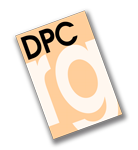New Relationship Models for the Ecclesiastical Law in Europe. (RI §416319)

Nuevos modelos de relación del Derecho Eclesiástico en Europa -
Giovanni Cimbalo
El artículo ofrece una contribución a la construcción de un nuevo derecho eclesiástico para Europa, abogando por una renovación de las herramientas de investigación y del conocimiento científico necesario para comprender la complejidad de los procesos en marcha, en particular después de la ampliación hacia el Este de la Unión Europea. Con este fin, el estudio subraya la importancia de la base de datos Licodu.cois.it, que proporciona la legislación y la jurisprudencia de los países de Europa del Este. El sitio web ayuda a reconstruir el marco constitucional y las leyes civiles, penales y de familia en el marco del fenómeno religioso, así como las principales normas nacionales de las comunidades religiosas en todos los estados de Europa del Este. También permite que el jurista pueda entender la secuencia histórica de las medidas que regulan los asuntos de interés religioso, el suministro de información y la realización de propuestas para el desarrollo de la investigación en el campo.
I. PROTECCIÓN DE LA LIBERTAD RELIGIOSA DE PERSONAS Y GRUPOS EN LA CONSTRUCCIÓN DE EUROPA.- II. AL ESTE DE LA AMPLIACIÓN DE LA UNIÓN: HACIA LA IDENTIFICACIÓN DE NUEVOS MODELOS ENTRE "SYMPHONY" y el laicismo. LAS NECESIDADES DE IDENTIDAD Y SEPARACIÓN ENTRE ESTADO Y LAS RELIGIONES.- III. LA POLÍTICA DE ACUERDOS: A). LAS IGLESIAS ORTODOXAS ENTRE LA SEGUNDA Y TERCERA EN ROMA. B) LA ESTRUCTURA ESPECIAL DEBALKAN ISLAM. C) EL PAPEL DE LA IGLESIA CATÓLICA Y SUS ESTRUCTURAS. D) LAS "NUEVAS RELIGIONES".- IV. RESTITUCIÓN DE BIENES DECOMISADOS DE LA IGLESIA.- V. LICODU.COIS.IT, UNA BASE DE DATOS SOBRE LA LIBERTAD DE RELIGIÓN Y CONCIENCIA EN EUROPA DEL ESTE.
The article offers a contribution to the construction of a new church law for Europe. It argues for a renewal of the research tools and scientific knowledge necessary to understand the complexity of the processes under way, in particular following the European Union’s eastwards enlargement. To this end, the study underlines the importance of the database Licodu.cois.it, that provides the legislation and case law of Eastern Europe’s countries. The website helps to reconstruct the constitutional framework and the civil, criminal and family laws on religious phenomenon as well as the main national rules of religious communities in all Eastern Europe’s states. It also allows the legal researcher to understand the historical sequence of the measures that regulate the matters of religious interest, providing information and making proposals for the development of research in the field.
I. PROTECTION OF RELIGIOUS FREEDOM OF INDIVIDUALS AND GROUPS IN THE CONSTRUCTION OF EUROPE. - II. EASTWARD ENLARGEMENT OF THE UNION: TOWARDS THE IDENTIFICATION OF NEW MODELS BETWEEN “SYMPHONY” AND SECULARISM. THE NEEDS OF IDENTITY AND SEPARATION BETWEEN STATE AND RELIGIONS. - III. THE POLICY OF AGREEMENTS: A) THE ORTHODOX CHURCHES BETWEEN THE SECOND AND THIRD ROME. B) THE SPECIAL STRUCTURE OF BALKAN ISLAM. C) THE ROLE OF THE CATHOLIC CHURCH AND ITS STRUCTURES. D) THE "NEW RELIGIONS." – IV. RESTITUTION OF CONFISCATED CHURCH PROPERTIES. - V. LICODU.COIS.IT, A DATABASE ON FREEDOM OF RELIGION AND CONSCIENCE IN EASTERN EUROPE.
Documento disponible para usuarios registrados.
Para consultar gratuitamente este artículo primero deberá registrarse como usuario.
